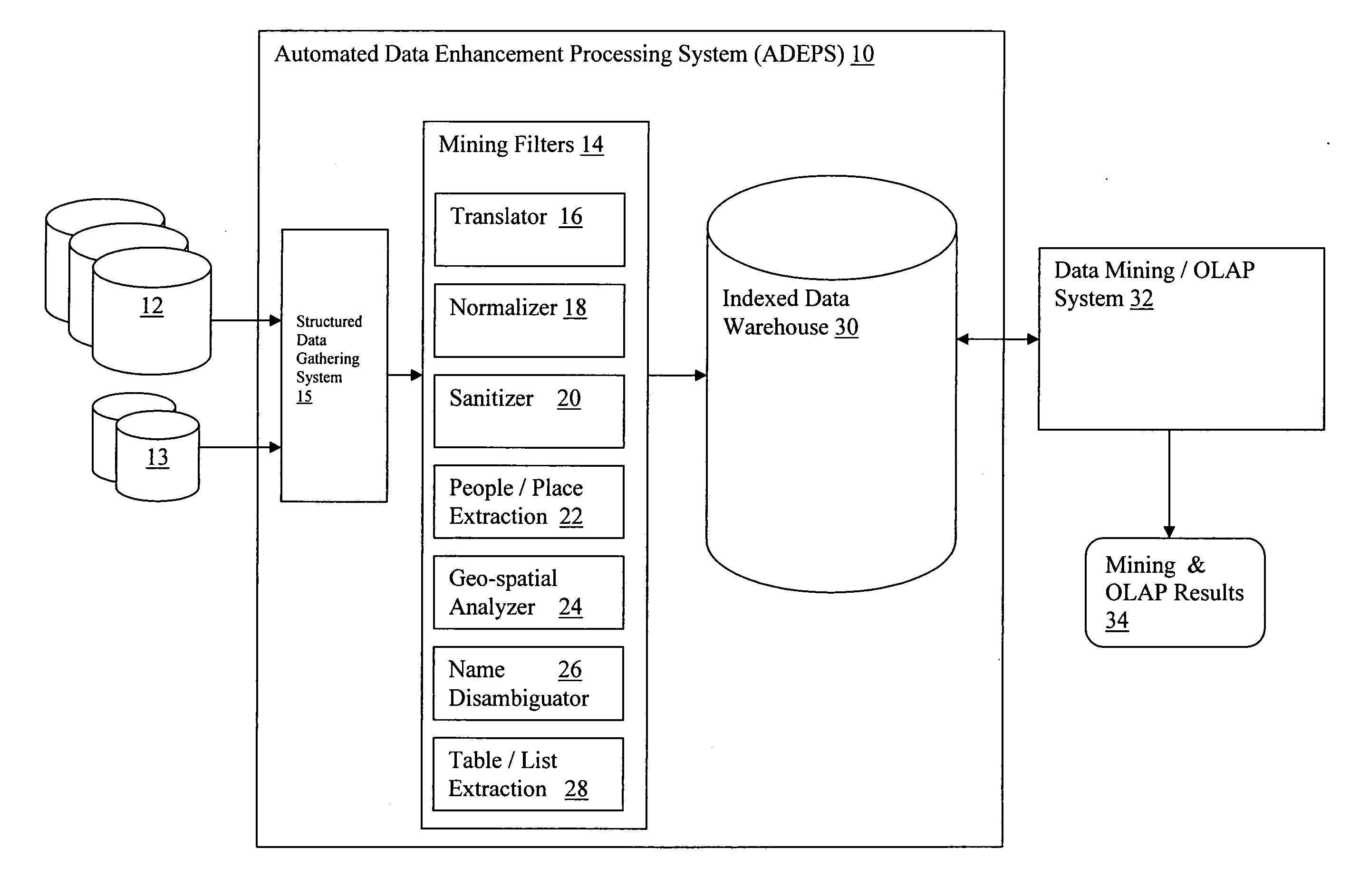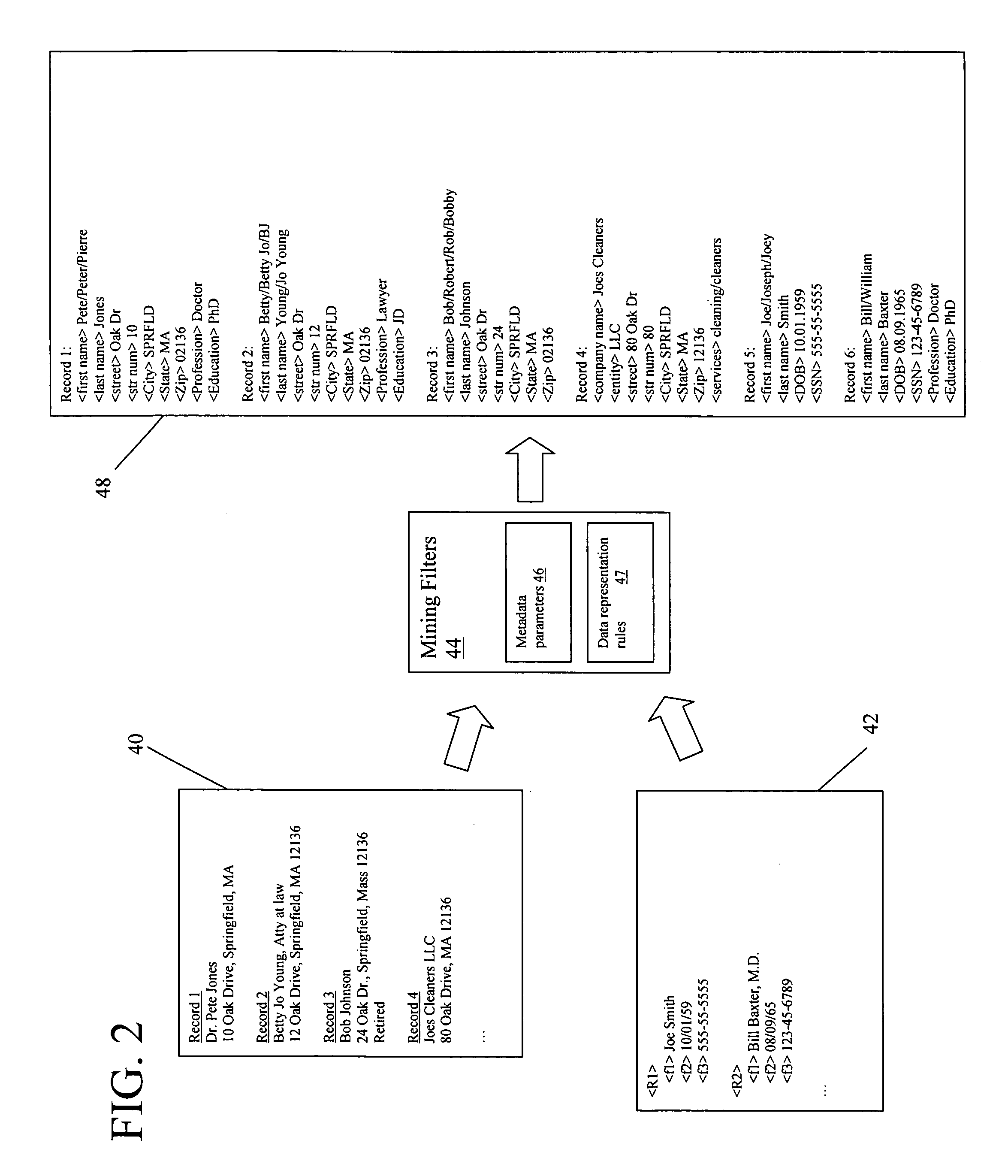System and method for automating data normalization using text analytics
a text analytics and data normalization technology, applied in the field of data normalization, online analytical processing and data mining, can solve the problems of prohibitive costs, little value in mining data, and enormous effort required to sanitize, normalize and disambiguate data, and achieve the effect of effectively storing, sanitizing and normalizing the resulting data
- Summary
- Abstract
- Description
- Claims
- Application Information
AI Technical Summary
Benefits of technology
Problems solved by technology
Method used
Image
Examples
Embodiment Construction
[0018] The present invention essentially treats structured database data as “unstructured” data, and applies one or more automated text analysis technologies (referred to herein as “mining-filters”) to sanitize, normalize and disambiguate the data. Structured data may be generally defined as elements of relational databases representing (numeric) values of well defined entities such as birth dates, social security numbers, bank account balances, etc.—as well as alpha-numeric values such as name, occupation, marital status, etc. Structured elements of a database may also be represented (i.e., labeled) in XML, (extensible markup language). Structured data may also include BLOBs (binary large objects). For example, a database of journal articles may define attributes such as author, title, publication date, etc.; but then include the entire text of the article under the “body” attribute (i.e., as a single data element). Accordingly, for the purpose of this disclosure, structured data i...
PUM
 Login to View More
Login to View More Abstract
Description
Claims
Application Information
 Login to View More
Login to View More - R&D
- Intellectual Property
- Life Sciences
- Materials
- Tech Scout
- Unparalleled Data Quality
- Higher Quality Content
- 60% Fewer Hallucinations
Browse by: Latest US Patents, China's latest patents, Technical Efficacy Thesaurus, Application Domain, Technology Topic, Popular Technical Reports.
© 2025 PatSnap. All rights reserved.Legal|Privacy policy|Modern Slavery Act Transparency Statement|Sitemap|About US| Contact US: help@patsnap.com



